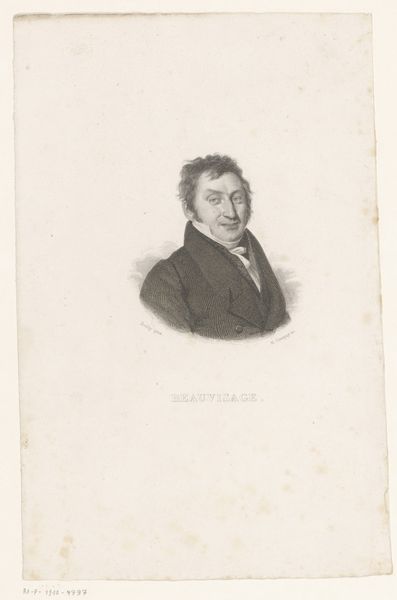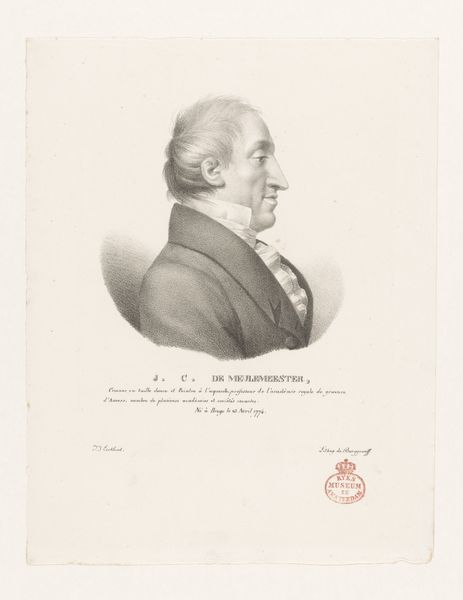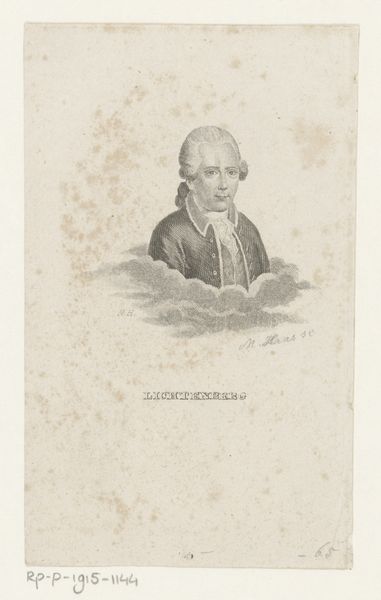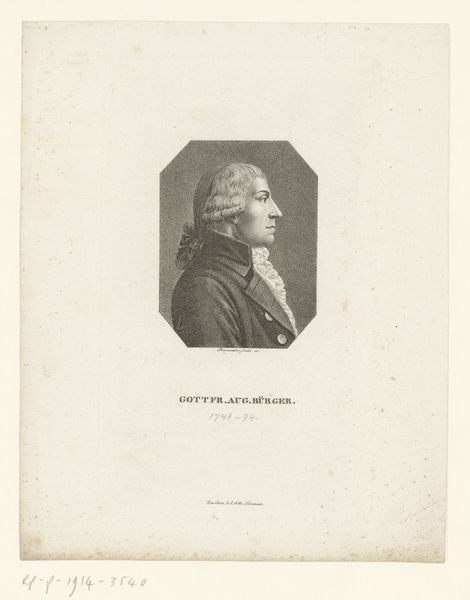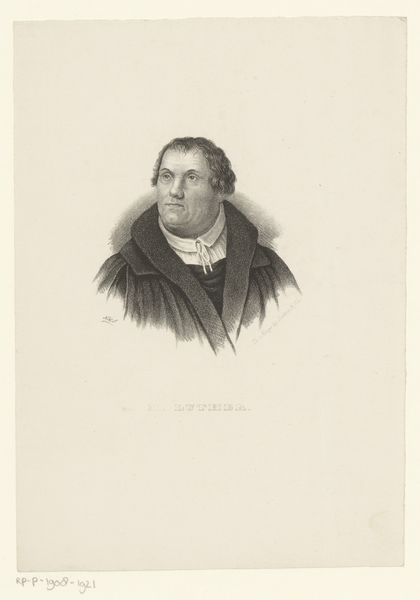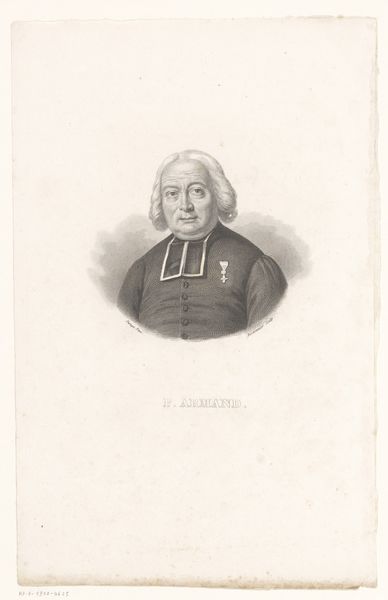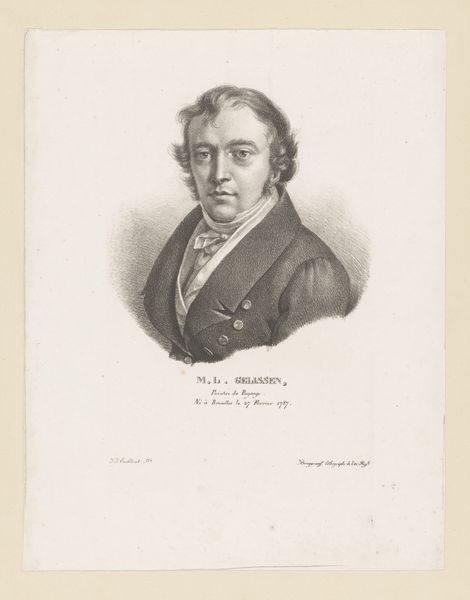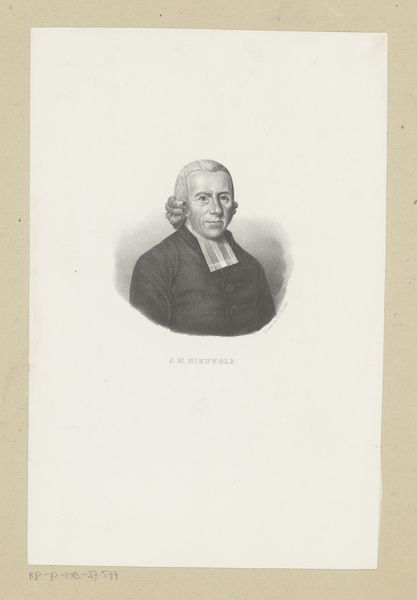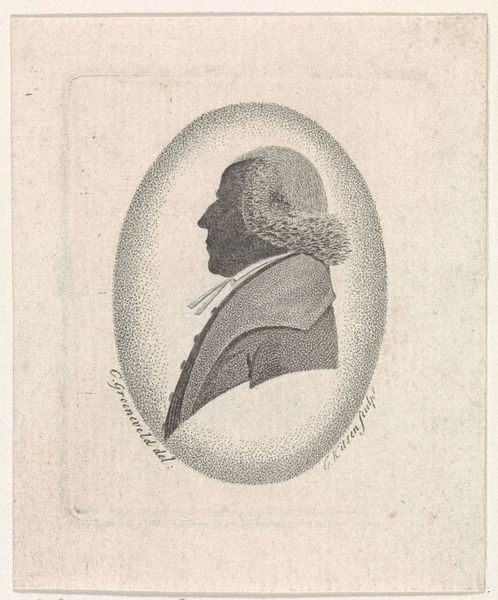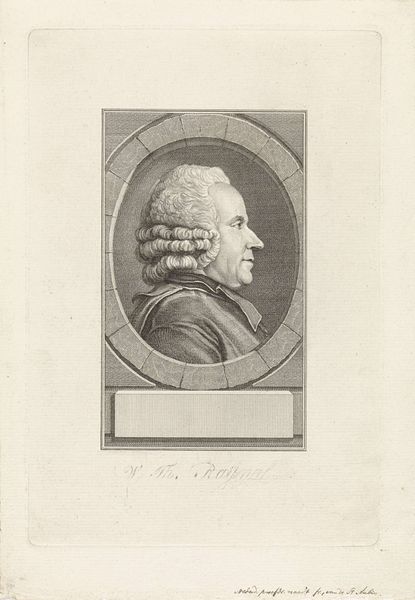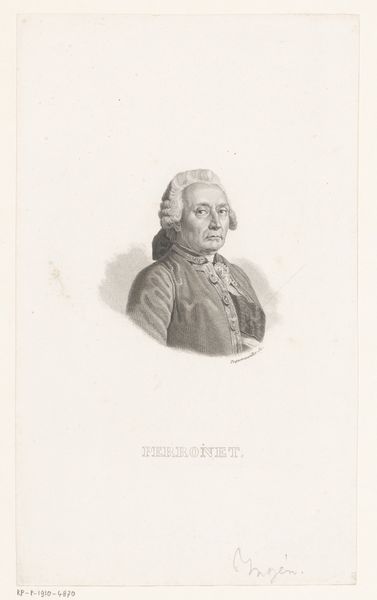
print, engraving
#
portrait
#
pencil drawn
#
neoclacissism
# print
#
pencil sketch
#
old engraving style
#
pencil drawing
#
engraving
Dimensions: height 244 mm, width 156 mm
Copyright: Rijks Museum: Open Domain
Curator: This is a print dating from 1819 to 1843, a "Portrait of Anne Claude de Caylus" after a drawing by Ephraïm Conquy. It's rendered with delicate engraving. Editor: There’s a ghostly quality to it, isn’t there? The lightness of the engraving almost makes Caylus seem like a specter of the Enlightenment, a memory fading from view. Curator: Interesting observation! The profile view is very classical. Consider the symbolism. The clean lines, the reserved pose… they echo the Neoclassical desire for order and reason. The portrait style itself is loaded with meaning – signifying intellect and status. Editor: Absolutely. But look closer at the execution. The wig, for instance. You can almost feel the labor that went into producing such detail. And think of the materials – the paper, the ink, the metal plate etched by Conquy. There's a real physicality there that contradicts this air of immateriality. Curator: You are right. It's a powerful contrast. Engravings, particularly during that period, allowed for a wider distribution of images, thus playing a crucial role in disseminating ideals. Editor: And in shaping them. Think of the labor relations inherent in printmaking. There’s a whole economy of craftsmanship embedded in that plate, not just the aristocratic ideal it depicts. This reveals more than meets the eye. It points to the production systems of the time. Curator: The image serves as a potent symbol, signifying the subject’s legacy and impact, regardless of production constraints. Editor: Maybe, but it is these often unexamined structures of production that provide an understanding of what was valued and what materials meant. That wig didn’t make itself! Curator: That's a fair point. Focusing on the production offers a ground-level view of a particular historical time. Editor: It’s essential. Without looking into materials and methods, the past feels too… distant. Seeing the craft allows us a tactile connection with a specific, material history. Curator: Indeed. Viewing “Portrait of Anne Claude de Caylus” with these considerations certainly provides deeper meaning. Editor: Agreed. Thinking about materials, methods and circulation adds an extra richness.
Comments
No comments
Be the first to comment and join the conversation on the ultimate creative platform.
